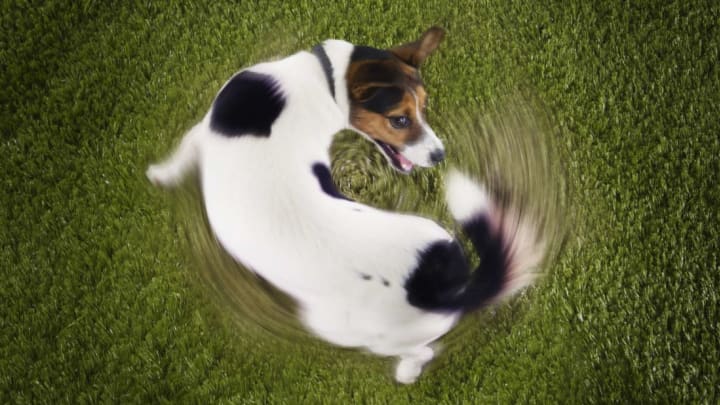If you find yourself clicking your pen incessantly during a long meeting, it’s possible that you’re either really bored or really anxious. According to Reader’s Digest, dogs often chase their tails for similar reasons (though that behavior is probably a bit cuter than your pen-clicking habit).
When a dog is stressed (looking at you, thunderstorms and fireworks) or simply needs to keep itself entertained while you’re busy, it might start chasing its tail as a self-soothing tactic.
“We call these displacement behaviors, similar to a human twirling their hair or tapping their foot,” Russell Hartstein, a certified dog behavior consultant and the founder of Fun Paw Care, tells Reader’s Digest.
If that adorable tail-chasing never fails to elicit lots of laughter and head pats from the humans in the room, your dog might learn to use the activity as a way to get positive attention, too. Usually, puppies are more predisposed to dashing in circles, and they gradually give up the behavior as they get older (though for reasons unbeknown to experts, German shepherds and terriers are often active tail-chasers, even in old age).
The behavior isn’t something to worry about in general, but you should take notice if it’s happening on a daily basis. As Cesar’s Way explains, this could mean that your dog has developed a compulsive disorder to cope with things like separation anxiety or past trauma. Or, if the habit arises suddenly and your dog appears to be biting or chewing on its tail, it could be a sign that worms, fleas, or another medical issue is plaguing your pooch. In either case, you should schedule a trip to the vet.
Have you got a Big Question you'd like us to answer? If so, let us know by emailing us at bigquestions@mentalfloss.com.
